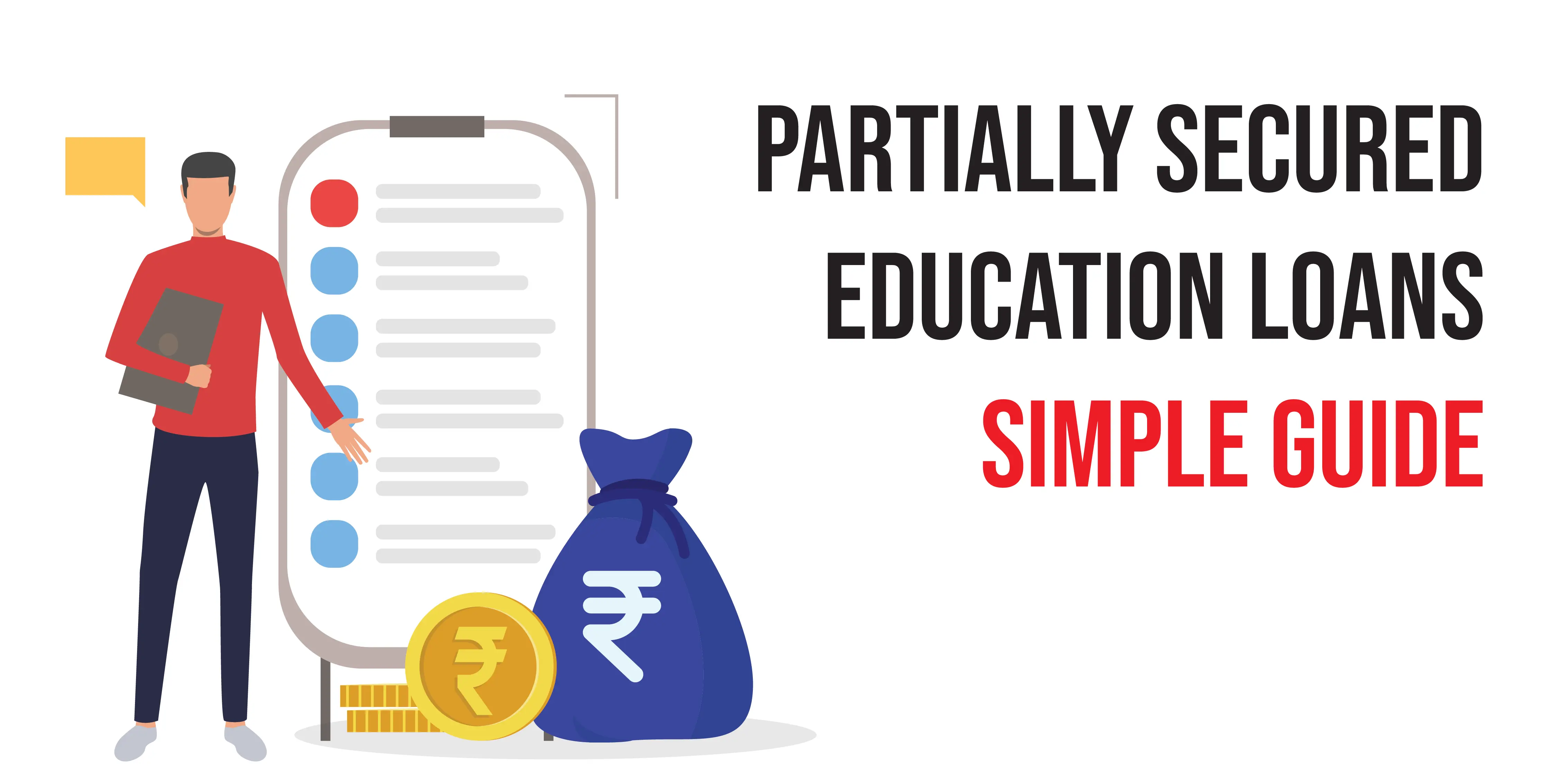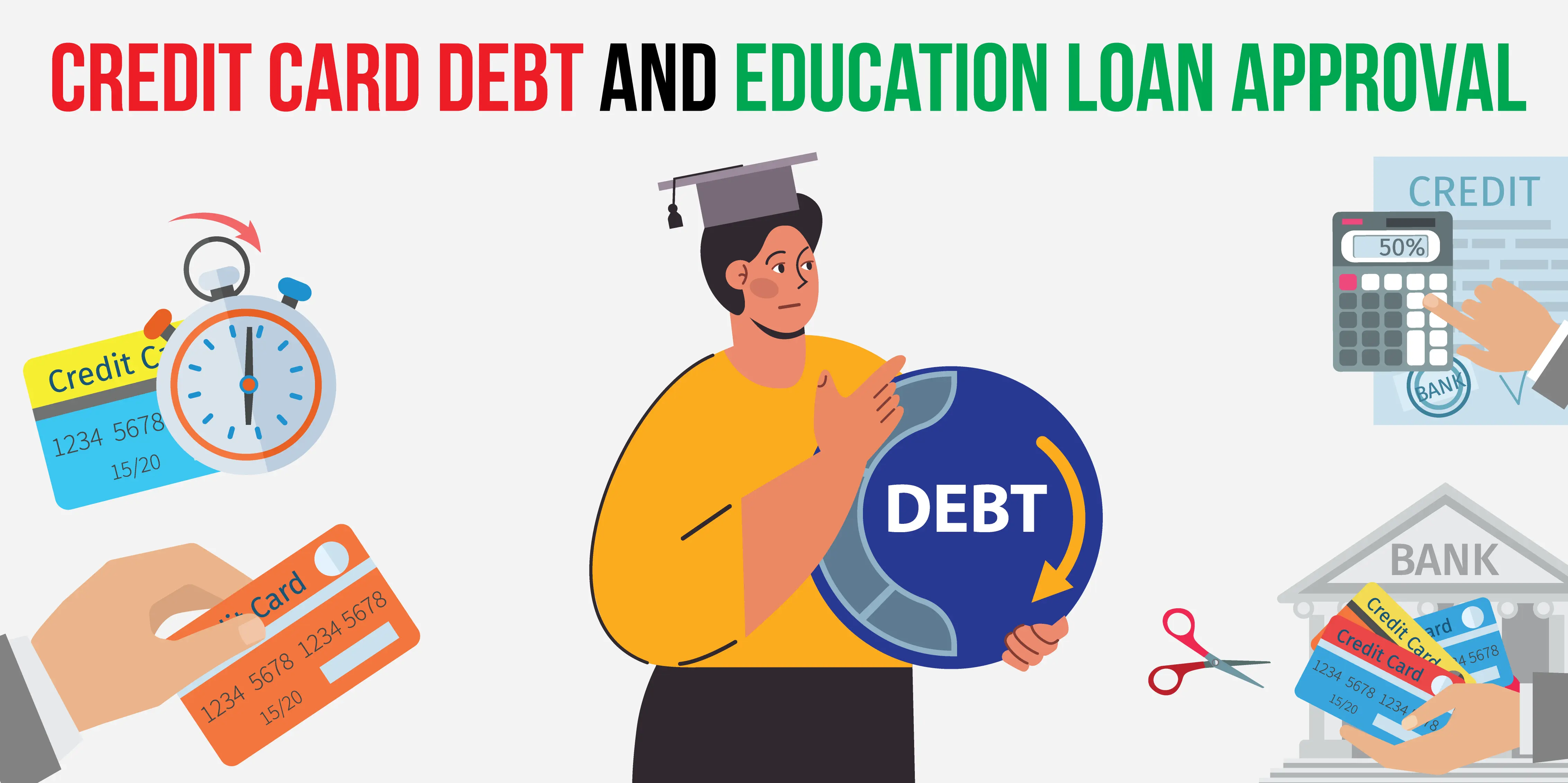https://www.wemakescholars.com/blog/partially-secured-education-loans
Guide to Partially Secured Education Loans in India
Abroad Education Loan | Updated on ()

Students, are you worried that you do not have enough collateral to get the full loan amount to fund your higher education? Worry not. We have covered you.. Partially secured loans are a great rescue for students who do not have enough collateral to get the full loan amount.
In this blog, we will explore what partially secured education loans are, how they can help students get the full education loan amount, etc. Read further to learn more about partially secured Education loans.
What are Partially Secured Education Loans?
Partially secured Education loans refer to education loans that are partially secured, meaning the borrower pledges collateral to secure a portion of the loan amount, but not the full amount. The other part of the loan amount is provided as an unsecured loan, based on various factors such as the student's profile, co-applicant status, and university college.
In other words, if students cannot pledge collateral for the full loan amount, still get the full loan amount by pledging collateral, and the remaining loan amount is given by assessing other factors of the student.
Not all lenders provide partially secured education loans. Only Private banks and NBFCs offer partially secured Education loans. Public banks strictly cannot provide partially secured education loans.
How do Partially Secured Education Loans work?
To understand how partially secured education loans work, let us consider an example.
- Assuming a student named Vijay wants to take a secured education loan of 40 lakhs. But the students have collateral worth of only 10 lakhs.
- Students can use the existing collateral and apply for NBFCs and Private banks. These lenders can use the collateral to secure a part of the loan's amount. The remaining amount will be issued upon evaluating various other eligibility factors of Vijay’s profile.
- However, the interest rate depends on what percentage of the loan amount the collateral secures.
- In essence, partially secured loans are loans for which a part of it has been secured by any collateral, and the remaining loan amount is unsecured.
Difference Between Secured, Unsecured, and Partially Secured Education Loans
Below are the key differences between secured and unsecured, and partially secured loans.
|
Feature |
Secured |
Unsecured |
Partially Secured |
|
Collateral Required |
Yes(maximum loan amount) |
No |
Yes, but less than the loan amount |
|
Loan Amount |
Higher loan amounts |
Limited loan amount |
Based on collateral, moderate to high loan amount |
|
Interest Rate |
Low interest rate |
High Interest Rate |
Based on collateral coverage |
|
Approval Chances |
High |
Moderated, depends on various factors |
Moderate to high based on collateral |
|
Documentation |
More documents required |
Lease documents required |
Moderate documentation |
|
Available Lenders |
Public, Private, and NBFCs |
Public, Private, and NBFCs |
Private and NBFCs |
How Collateral Affects Interest Rates in Partially Secured Education Loans
In partially secured Education loans, the collateral that you pledge can significantly impact your interest rates.
- If the collateral covers a high percentage of the loan amount, the lender typically charges a lower interest rate.
- If the collateral covers a low percentage of the loan amount, then the lender charges higher interest rates.
Let us understand this better with an example.
Assuming the student is taking a 30 lakh loan amount
|
Collateral coverage value |
Lender view |
Interest rate |
|
25 lakhs |
Approx 83% low risk |
Low rate (10%) |
|
10 lakhs |
Approx 33% medium risk |
Moderate rate (11%) |
|
3 lakhs |
Approx 10% high risk |
Higher rate (12.5%) |
NOTE: The above example is just an approximation of values for students to understand the scenario better. Actual values differ from case to case.
Benefits of Partially Secured Education Loans
The following are the key benefits associated with partially secured education loans.
- Higher loan amounts with less Collateral: Unlike secured education loans, Students can get higher loan amounts by pledging less collateral than the loan amount.
- For example, a student can get 20-50 lakhs of loan by securing a part of it with 10 lakh worth of collateral.
- Lower Interest Rates Compared to Unsecured Loans: Students can get partially secured loans at a lower interest rate compared to the interest rates of fully unsecured loans. Because a part of it has already been supported by the collateral. The interest rate usually depends on the percentage of the loan amount that the collateral amounts to.
- Better Approval Chances: If a student is not able to go for full collateral loans but has a strong academic profile and a co-applicant, the student has better chances of loan approval with partial secured collateral.
- Flexibility in Collateral Type: Students have the flexibility of choosing the type of collateral that they want to pledge to secure a part of the loan. Collateral types such as a fixed deposit. Properties, Lic deposits, etc., can be used to pledge against some part of the loan.
Lenders offering Partially Secured Education Loans
As we previously discussed, only private and NBFCs offer partially secured Education loans.
- Private Banks: Private banks, such as ICICI, IDFC, and AXIS, offer partially secured Education loans. These banks have specific products tailored to the requirements of the students. Each product has a different features catering to the needs of the students.
- NBFCs: NBFCs refer to non-banking financial corporations. These financial institutions such as known for offering higher amounts of education loans. NBFCs such as AUXLIO, AVANSE, INCRED, and CREDILA are among the top NBFCs that offer partially secured education loans.
How to Apply for Partially Secured Education Loans
The following are the steps to follow to apply for partially secured education loans.
- Initial Research: The first step to apply for partially Secured Education Loans is to research the lenders that are offering partially Secured Education loans.
- Apply for the Loan: Visit the official website of the lender and apply for a loan as per the given instructions, / Request a callback to apply for the loan.
- Submit the Documents: Submit all the necessary documents required by the lender. After which, a thorough verification will be done by the lender.
- Pay the Processing Fees: Students must pay the processing fees to get the loan sanctioned.
- Loan Sanction: After a successful verification, lenders will approve the loan and issue the sanction letter with details of the loan amount, interest rate, terms and conditions, etc.
- Sign the Loan Agreement: Students then need to go through the loan agreement details meticulously and sign.
- Disbursement of the Loan: After signing the loan agreement, the loan amount will be disbursed directly to the university or a savings account as per the agreed terms.
Eligibility Criteria to Secure a Partially Secured Education Loan
Below is the eligibility criteria required to get a partially secured education loan.
- Citizenship: Both the applicant and co-applicant must be Indian citizens.
- Academic Background: The student is required to have a decent academic background. Because only a part of the loan is secured by collateral, the amount is approved based on the strength of the student's profile.
- Admission Status: Students must have secured admission to a recognized university.
- Age: Students’ age must range between 16 to 35.
- Collateral: As the student is seeking a partially secured education loan, security such as property, FDs, LIC policies, etc., is required to secure a part of the loan.
- Other Criteria: other criteria, including the course, the country, and the rank of the university, are also considered by the lender to issue the partially secured education loan.
Documents Required for a Partially Secured Education Loan
The documents required to get a partially secured education loan are
- KYC Documents: Documents proving the identity of the applicant and co-applicant
- Aadhaar card
- PAN card
- Passport
- Driving license etc
- Admission Letter: Students are required to submit the admission letter as proof of acceptance from the university.
- Academic Records: Students should submit all their academic documents from their previous education, such as 10th class, 12th class, and graduation (if applicable).
- Co-applicant Documents: Co-applicant documents are to be presented as per the requirements of the lender.
- Collateral Documents: the valid and legal documents of the collateral that is being pledged to get the partially secured Education loan.
- Additional Documents: Additional documents, such as passport-sized photographs, a loan application form, are to be presented as per the requirements of the lender.
Conclusion
Students can still get the full loan amount even if they do have enough collateral. These are called partially secured Educational loans. In this blog, we have explored what partially secured education loans are, how they work, and how to apply for them.
Obtaining an education loan to fund your studies can be quite challenging, with different lenders offering varying options. Contact WeMakeScholars, an organisation partnered with over 15 public and private lenders. When you apply for an education loan through us, our experienced team will help you find the most suitable loan for your higher studies. Request a callback today to contact our team.





Kindly login to comment and ask your questions about Scholarships & Education Loans